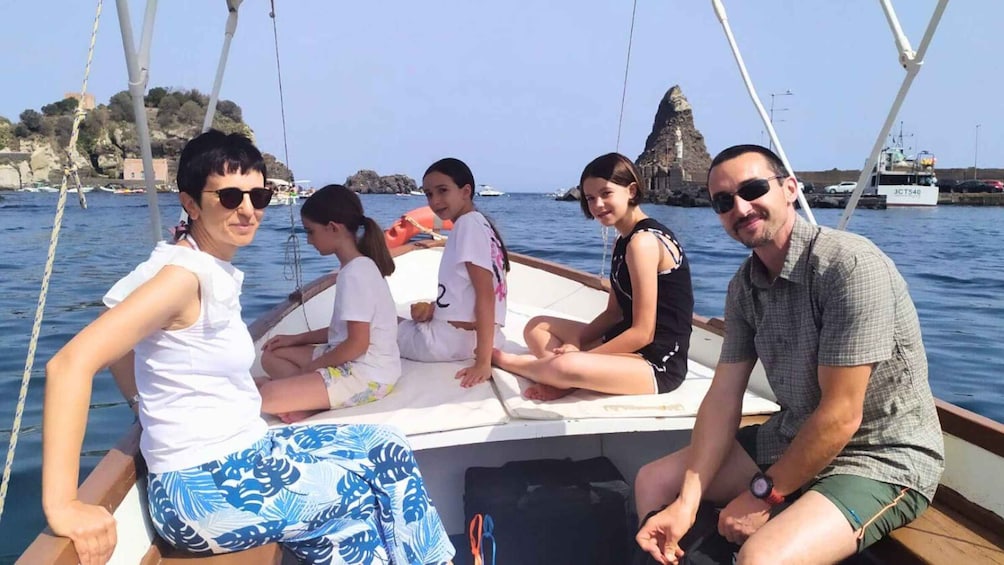From the ancient port of Aci Trezza in Sicily
Included in the price:
1) Guide on board for historical narration of the storic Ciclops coast and Aci Trezza
2) Swimming with tourist guide in Ulysses' s Caves
3) On the boat you eat a classic small hot Sicilian lunch with fresh organic wine from Agrigento
1.Island of Lachea Aci Trezza
The island Lachea, not large, is the largest of the outcrops that make up the archipelago of the Cyclops, just off Aci Trezza, in Sicily.
It is part of the Integral Natural Reserve Isola Lachea and Faraglioni dei Ciclopi, the protected area established by the Sicilian Region in 1998.
The island, like the others of the archipelago, is of subvolcanic origin, formed by the intrusion of magma in the pre-existing rocks of the seabed.
In 1869 a prehistoric diorite axe was found, while in 1919 two cave tombs were identified, carved into the rock by the hand of man. Of the late Roman period are the objects found inside one of the two large circular holes (about one metre deep) on the island: pots, amphorae, loom weights, bone needles, fragments of a bone comb and a small lamp.
The naturalistic museum houses a rich collection of fauna and flora.
The Faraglioni
It is thought that their origin is associated with the wrath of the cyclops Polyphemus who, blinded by Ulysses, would have thrown the rocks into the sea against the Greek hero to prevent him from fleeing.
A storey that has certainly fuelled legend about the Cyclops Islands, also told in the ninth book of the Odyssey. Fantasy aside, these are wonderful works of nature, sculpted for thousands of years by wind and rain, which fall within a protected marine area, composed of Lachea Island, stacks and four other rocks arranged in an arch. Their origin – in addition to the legend of Polyphemus – can be traced back to the first of the four phases of the evolution of the volcano Etna, an intense volcanic activity that began about half a million years ago.
Norman Castle Aci Castello
The castle of Aci is located in Aci Castello in the province of Catania. The fortification of uncertain origin, was the fulcrum of the development of the territory of the Aci in the Middle Ages. During the Sicilian Vespers, it was subjected to the lordship of Roger of Lauria, then in the Aragonese era it was of John of Sicily and finally of the Alagona being besieged several times. It is currently home to a civic museum.
The basaltic promontory where the castle stands, consists of underwater lava flows (pillow) that have a radiometric age of about 500,000 years from the present. The basaltic cliff is surrounded by a lava flow of prehistoric times that in the historiography of the nineteenth century had been wrongly attributed to the eruption of 1169
Ulysses' Caves in Ognina
Sicilian food and wine tasting




